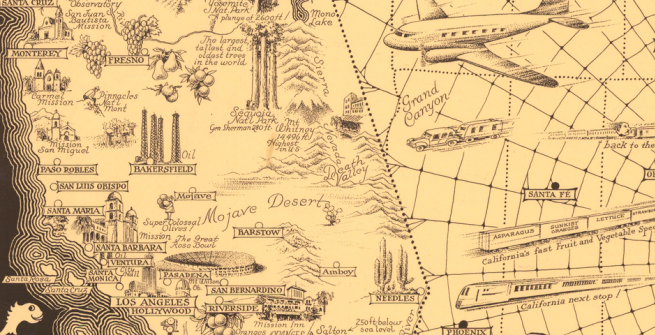The last time I looked upon Admission Day as an important holiday for our dear Golden State was probably back in Sister Leocritia’s grade 4 classroom at St. Helen school back when electricity was new.
While September 9 is an extremely important day in California history, the holiday has assumed a rather jejune reputation since no one gets out of school or stays home from work that day. It is a legal observance, but businesses and government offices do not close…sigh.
Yet, the event involves some of the most complicated and contentious political skirmishes in the history of the United States. Out in our Los Angeles, statehood was not terribly popular with the ensconced Californios who were more concerned with an uncaring Mexican government, encroaching American carpetbaggers, and foreign powers who looked to take the sleepy pueblo under their powerful wings. El Pueblo de Nuestra Señora la Reina de Los Ángeles was a forgotten outpost with only about 1500 souls dotting the hills and dry valleys of the Pueblo. It would take a little of the old Manifest Destiny to get us truly involved with joining the expansion of the United States. At first, the Californios fought the Mexicans for sovereignty, then the Americans before being basically outnumbered by the U.S. In old Los Angeles, it even involved some genuine military skirmishes as part of the Mexican-American war, including the Siege of Los Angeles (where Californios routed the thinly represented occupying American forces), the battle of Dominguez Rancho, the battle of San Pascual (with 21 Americans killed) and the Battles of San Rio San Gabriel and La Mesa that ended hostilities in the war and lead to the “Treaty of Cahuenga” and the end of the Mexican-American war with the rather one-sided Treaty of Guadalupe Hidalgo.
The truth is the residents of California were very dissatisfied with the colonial governments of Spain and, later, Mexico, who mostly ignored the far-off colonies and provided little stimulus to commerce, agriculture, and culture. The Californios were so unhappy with the do-nothing governments they even seriously considered offering England a shot at making them part of the empire as a protectorate. The entire state was under-developed, un-improved and rather primitive. That was until gold was discovered in early 1848, and suddenly, California was flooded with hopeful entrepreneurs and politicians wanting to bring the state and its riches into the union. The population boomed from a mere 10,000 in 1846 to 26,000 three years later to almost 100,000 by statehood. With gold in the picture, the United States began a war with Mexico, which was already struggling with domestic strife, and eventually took entire states into the union (with the aforementioned Treaty of Guadalupe Hidalgo), including California, Nevada, Utah, Arizona, most of Texas, Kansas, Colorado, Wyoming, Oklahoma and New Mexico. Still, before the shooting began, the Californios were not too happy about the intrusion of the Americans, who seemed to be bullying them and forcing them to accept their terms with little concern for local established customs. Los Angeles, despite being solidly against slavery, leaned more toward the Confederate cause that was building toward the disastrous Civil War in the near future.
The prize of California became the 31st state on September 9, 1850, after the California constitution was drafted and signed on November 13, 1849. While the Golden State grew to greatness, it was not all golden poppies for the Californios who, despite owning ranches and homes for generations, had to take said claims to court for the privilege of paying American taxes and keeping what was already theirs.
There are several maps here that tell some of these stories.
First, the Disturnell map that was known as the treaty map, determining territories that would eventually end up in the U.S.
The second is a Flag Map of California showing the diverse claims of governments on the lands of California.
The third is a favorite by the great pictorial mapmaker E. Dudley Chase, demonstrating the view of Californians toward the rest of the country.
Click on each map to view full size.



